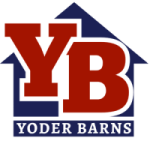-
History of Pole Barns and Their Appeal
Whether you own a farm, a lot of land or are pricing out construction for a commercial building, you've likely found out that pole barns and post-frame construction can go up much faster and be less expensive. So, what's the history of this building style and how has it evolved to encompass so many building options?
History of Pole Barns: Why Post-Frame Buildings Are So Popular
The phrase "pole barns" can frequently mean any structure built as a post-frame building. Meaning, a pole barn can actually be a pole garage or a mixed-use space or a commercial storage building. Basically, a pole barn is also known as a post-frame building, and they have a rich history that dates back to the early 20th century. Originally designed as a cost-effective solution for farmers, these structures have evolved over the years, gaining popularity not only for their versatility but also for the speed and cost savings they offer in construction.
In this post we'll cover the history of pole barns and why they have become so popular. Hopefully this may help you determine whether or not a post-frame building may be right for you.
A Brief History of Pole Barns
Pole barns were first introduced in the United States during the 1930s and 1940s. They were primarily used as agricultural buildings to house livestock, store equipment, and store grain. The distinguishing feature of these buildings was the use of large, widely spaced wooden poles or posts as the primary structural support, eliminating the need for a traditional foundation. This method allowed for faster construction and significant cost savings compared to traditional buildings.
Since the 1930's, pole buildings have evolved to meet a wide range of needs. What began as simple agricultural structures has transformed into a versatile building style suitable for various applications, from residential to commercial. Here's why post-frame buildings remain popular for quicker and less expensive construction:
- Minimal Foundation Requirements: The use of widely spaced poles as the primary structural support means there's no need for a full concrete foundation. This reduces the time and cost associated with foundation work.
- Efficient Construction: Pole barns can be constructed more quickly than traditional buildings due to their straightforward design. The absence of complex framing and masonry work results in a shorter construction timeline.
- Cost Savings: With reduced labor and material requirements, pole barns are generally more cost-effective to build compared to conventional structures. This makes them an attractive choice for those looking to save on construction expenses.
- Adaptability: The design of pole barns allows for easy modifications and additions. You can expand the structure or customize it to suit your specific needs without extensive renovation costs.
- Versatility: Today, pole barns are used not only for farming but also for garages, workshops, retail spaces, and even homes. Their adaptability and cost-efficiency have made them a preferred choice for various applications.
The history of pole barns tell a story of ingenuity and practicality. Their origins in agriculture have led to versatile structures that offer quicker and more cost-effective construction solutions. Whether you need a farm building, a garage, or a commercial space, pole barns provide a reliable and efficient option. Their enduring appeal lies in their ability to deliver quality construction without breaking the bank.
PROVIDING THE BEST POLE BARNS, BUILDINGS & SHEDS
At Yoder Barns we always strive for 100% customer satisfaction. We are proud of our Amish built pole barns, pole buildings and custom sheds. We believe the price is fair for such well built buildings with quality material and aim for 5 star reviews on each job. Please consider leaving us a review.
